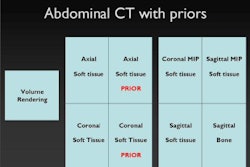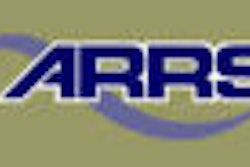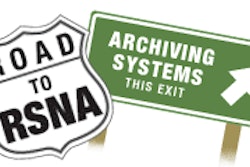AuntMinnie.com presents part I in a two-part series by PACS consultant Michael Gray on effective PACS data migration.
This won't come as a shock to anyone, but when an imaging facilities changes from PACS A to PACS B, it will very likely require the wholesale migration of study data from A to B. No matter how DICOM-conformant either system is said to be, one cannot simply unplug the archive from PACS A and plug it into PACS B. Data migration may be required even if you decide to stay with the same PACS vendor, and it is nearly always true if you are changing PACS vendors.
A data migration project is time-consuming, expensive, and something neither the old nor the new vendor is enthusiastic about. It gets particularly troublesome if PACS A is on its last legs. Data migration is the last thing you want to be dealing with in the months following a new PACS installation.
Also consider that the true information life cycle of radiology data will likely span 20 years. Given the projected growth of data volumes over the coming years due to 64-slice CT scanners, as well as data produced by the new generations of digital mammography and cardiology systems, you could be looking at migrating an accumulated 50-100 TB of data. And if you're really fortunate, you'll only have to change your PACS network three times during that period, so you're looking at having to live through three of these massive data migrations.
There is no escaping the inevitable data migration, but I submit that there is a way to avoid having to do it over and over again. It's a concept based on separating the archive from the PACS. You can accomplish it by taking these simple steps, in a concept I refer to as proactive data migration:
- Migrate your study data from your current PACS to a vendor-neutral storage solution.
- Store the study data in a DICOM format.
- Insist that your next PACS be able to interoperate with this neutral DICOM archive.
- Continue to expand the neutral archive (not the PACS) to accommodate all new study data.
But it isn't enough to simply migrate the data from PACS A into a neutral DICOM archive. That gets the data out of PACS A before the system falls apart or before the service disappears, but that is not the end game. If PACS B is not required to interface with the neutral DICOM archive, you'll simply have to migrate the data once again when you move to PACS C.
Let's face facts -- every time you choose to store your study data in a captive PACS archive, you are setting yourself up for a data migration project sometime downstream.
An end to proprietary data storage
I realize that "DICOM archives" have been around for a few years with mixed results, but any failure of those earlier efforts should be attributed to the PACS vendors insisting on building proprietary systems, and the PACS buyers letting them get away with it. In my opinion, it is time to put an end to proprietary data storage. Perhaps the data migration issue can be the rally point.
Let's look at some business issues that support the concept of a proactive data migration project. First of all, there is the issue of timing. The time to migrate study data from your existing PACS is now rather than later. There will be less data to migrate now than if you wait until the new PACS is installed. This will minimize the amount of time and the expense required to migrate the data.
Now would also be a good time to start storing all of your data objects in a DICOM format. Most PACS networks today are relatively proprietary systems that manage data in proprietary database directories, and store many of the study work products (presentation states, key image notes) as proprietary objects. To make all of the study data stored in your present PACS available to your next PACS, you will literally have to extract non-DICOM data objects from your existing PACS and convert them into DICOM objects. This extraction and conversion would be part of the proactive data migration project.
If you have any doubt about the accuracy of your study headers, you will want to take the opportunity during data migration to compare every migrated study against the original orders in the HIS or RIS, and reconcile the differences. Time-consuming? Yes, but a smart thing to do if you really want to find any of this data again.
By now you have a pretty clear picture of why data migration is a major undertaking that can consume as much as four months for every year of study data in the old PACS. That's because one (if not both) PACS networks are going to be in full clinical use all the while this data migration is going on, and there's only so much bandwidth available. So being proactive is definitely the best approach to data migration.
Growing storage needs
A second business issue that argues in favor of the proactive data migration project is the ever-growing need for storage. If your current PACS is more than three years old, you should probably start thinking about migrating data from the storage media you originally purchased with the PACS to new media. This is termed "media migration." The older media is less reliable, slower, and more expensive to maintain.
Regardless of how old your current PACS is, you probably need more storage to keep up with growth and new modalities. Why add more captive storage to PACS A when you know you will eventually be moving on to PACS B, unless you know that PACS B can utilize this new storage? Adding any new storage to the vendor-neutral storage solution makes better business sense.
A third business issue that argues in favor of proactive data migration is the opportunity to build a vendor-neutral storage solution that will manage all of your study data for the full life cycle, 20 years if necessary. Most PACS vendors now claim that they would just as soon be out of the archive business, and they do now offer a choice of several storage solutions (EMC, IBM, HP, etc.).
But most of these independent storage solutions are still vendor lock-ins. The first year of storage is bid at a sweet price, but there are no vendor choices in years two through seven, and those future upgrades are rarely offered at "street prices." You want to be able to buy each year's media requirements from any of several vendors, and always at the best street price.
Make the proactive data migration project your opportunity to divorce your existing PACS, as well as each future PACS, from the data storage solution. Make migration project your opportunity to purchase and manage your own data archive, one that is built to last for the full life cycle of the study, not just the life cycle of a single PACS. It is time for PACS vendors to get out of the data archive business, for their product offerings no longer make business sense.
The proactive data migration project described here is the confluence of several business opportunities that will lead to your vendor independence. It is a pathway to an enterprise storage strategy that will be far less expensive to build and operate over the 20-year life cycle of your medical image data than the solutions currently being offered by PACS vendors. It is a DICOM standards-based solution that lends itself to large shared storage solutions like those that must be constructed for large integrated delivery networks (IDNs), or to serve as the central repository for regional health information organizations (RHIOs). It is the opportunity to build a storage solution that will eliminate the need to migrate data ever again.
Next installment: A description of possible hardware/software configurations, the role of standards, a summary of what is to be gained and the potential costs, and an indication of how the DICOM archive can succeed the second time around.
By Michael Gray
AuntMinnie.com contributing writer
October 26, 2006
Michael Gray is the principal of Gray Consulting and has been providing consulting services related to PACS since 1991. Mr. Gray has recently published a "do-it-yourself" electronic RFP template. Information about "RFP with a Punch" and Gray Consulting can be found at www.graycons.com.
Related Reading
PACS users wise to maintain DICOM object integrity, April 6, 2006
Choose image archiving solutions before data volume grows too large, January 5, 2006
Foresight aids PACS migration, June 4, 2006
Planning mitigates PACS data migration, March 21, 2005
Conversion algorithm eases PACS data migration, July 29, 2004
Copyright © 2006 Gray Consulting



















